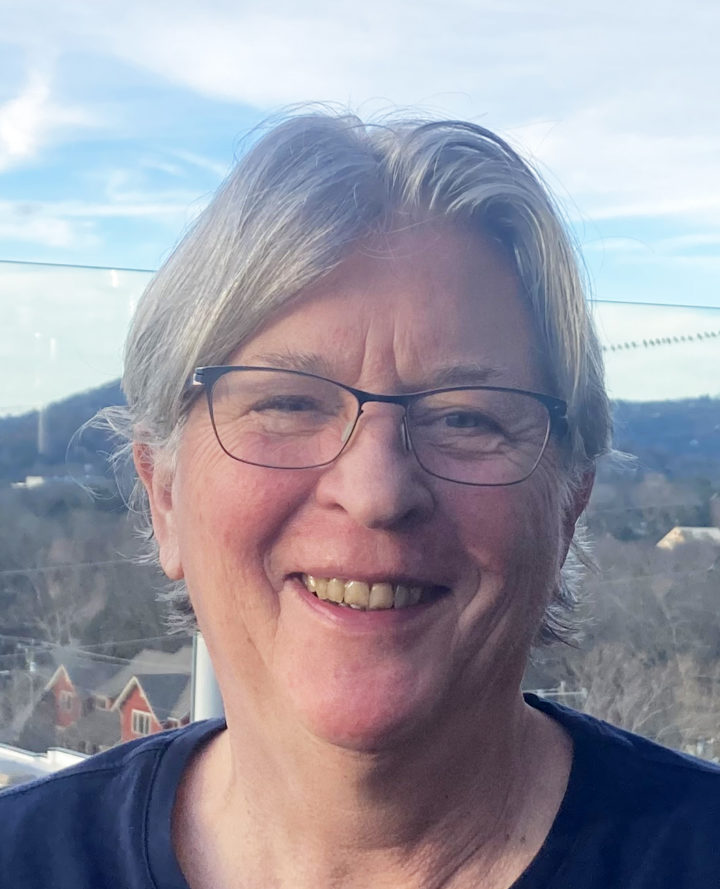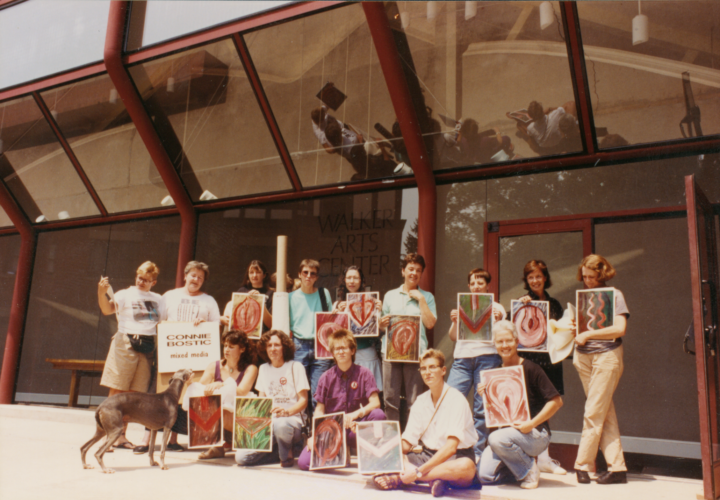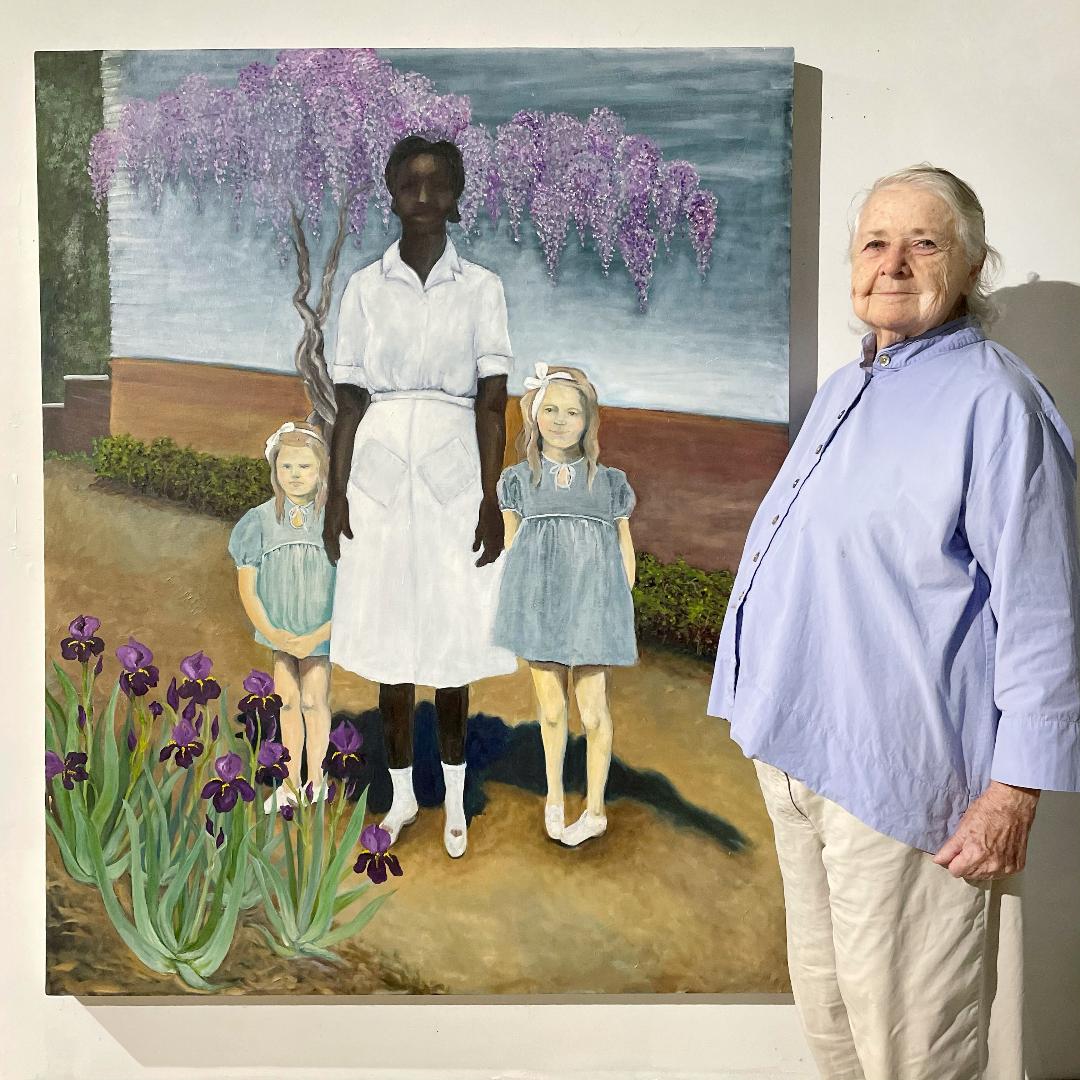BY ZOE RHINE
Asheville lost one of its greatest when Connie Bostic died last month. Connie was a creator, and Asheville was her beneficiary.
Connie first impacted the Asheville scene in 1983 when she opened a private gay club named Craig’s at 46 Wall St. with friend Craig Culbertson. When the bar closed in 1984, Connie and her husband, George Bostic, opened the Asheville Music Hall in the same location. It was one of the few spaces at the time to offer live music that included local groups, such as the women’s band Crimes of Fashion and the Beth Riser Band, as well as national bands like the Gregg Allman Band.
As Asheville Citizen-Times entertainment critic Tony Kiss noted at the time, “The Asheville Music Hall, one of the best things to happen to the city’s nightlife, offered John Prine, Tim Weisberg, Weird Al, John Lee Hooker, John Sebastian and the original Byrds, to name just a few.” It was a place open to all and provided a much-needed entertainment spot for dancing and meeting with friends. I remember a sign above the bar that said, “If the sight of two people of the same sex kissing bothers you, you can leave” — a radical statement for Asheville in the mid-1980s.
Cultivating an art scene

Connie may be better known, however, for the imprint she made on Asheville’s artistic landscape.
Around 1988, Connie joined with Western Carolina University and Bob Godfrey, chairman of the university’s art department, to create and administer an art gallery that would be free from exhibiting only salable art. The World Gallery, housed in the building Connie owned at 37 Biltmore Ave., showed both local and national artists. It opened in November 1989 and closed in August 1991, when WCU was no longer able to fund the effort.
Soon after World Gallery closed, Connie and George opened Zone one contemporary gallery in the same space. Zone one also included local and national exhibitions, providing not only a space to show work for local artists but also a venue for the community to view artwork that it would not have otherwise seen. The World Gallery and Zone one were the first contemporary art galleries in downtown Asheville. The openings were always well-attended by enthusiastic crowds and were celebrated affairs. After 10 years of hard work and incredible success in the community, Zone one closed on Jan. 1, 2001.
In a Mountain Xpress article about Zone one’s closing, Connie tells writer Patricia Bailey: “I wanted to show things that had some meaning, more than decoration. I am proud of the fact that so many artists have wanted to show here. My only regret is about the shows that haven’t happened.”
In that same story, fellow artist Marie Hudson says: “The greatest thing Connie has done is to encourage and promote and accept other artists.” And David Dawson adds: “Connie Bostic has been a real driving force for the art scene in Asheville, by showing work that was not the prevailing craft image available elsewhere in the region. Hers is a very generous spirit.”
Connie was also instrumental in the creation of the Black Mountain College Museum + Arts Center, which reflected on her passing on Instagram: “BMCM+AC mourns the loss of Connie Bostic, who was a longtime board member, a dear and true friend, an incredible artist, social pioneer and mainstay of Asheville’s creative community.
“Connie was chair of the board of directors at BMCM+AC for many years, and was instrumental to the museum and to the Asheville art scene in a myriad of ways. … In 2003, Connie was instrumental in helping BMCM+AC move into its first dedicated public space at 56 Broadway in downtown Asheville. She curated many exhibitions, wrote catalog essays and conducted dozens of oral history interviews with BMC alumni. Our museum gallery … is named the Connie Bostic Gallery in recognition of her dedication, generosity and immense support over our 30 years of operation. We celebrate her impactful life and will miss her deeply.”
Far-reaching work
Most importantly, Connie left her own large body of crucial and far-reaching work.
I have no idea where or when in the 1980s I first met Connie, but I clearly remember when I was among a group of 14 female friends and fellow artists who went with her to the Walker Arts Center on the campus of Asheville School in 1990 to protest the school’s decision to take down a show of hers that was on display there. School officials had objected to the subject matter of the paintings — abstract images of women’s female parts — and had hung sheets over the artwork until it could be removed.

She painted what she was consumed with, the things she was thinking about. She painted what was inside of her. She most often worked in series — I believe she wanted to explore all sides of a subject. She painted an early series of young women joyously, yet defiantly, holding up vegetables as if they were torches; a series of snakes; one of little girls holding chickens; girls holding bouquets of flowers; and recently, a series of portraits of white girls with the Black women who raised them that she started painting from her own family photos. She offers her work to you, if you want to think about these things, too.
The exhibition of hers that most moved me in this way was The Heart of Everything: Homage to the Water Protectors at Standing Rock. The work was inspired from her visiting the Wounded Knee cemetery and reading Bury My Heart at Wounded Knee. I took in image after image with all the accompanying information and left enraged at the world, yet so thankful to the art that had just informed me.
Connie often used collages when she was stuck and sent many to friends as postcards, especially during COVID. Her Christmas postcards were keepsakes.
One of my favorite memories of Connie stemmed from when I rented a studio apartment in her building for eight years. I had a 90-pound white, long-haired dog named Moses. Connie knew that I was training him not to jump up on people, but every time she saw him, her eyes would light up and she’d call his name and clap her hands against her chest, right where he’d plant his big front paws, so they could kiss and snuggle face to face. That was Connie Bostic.
A lasting legacy
Connie’s contribution to North Carolina must be viewed in its entirety. It is not limited by any means to the visual arts but includes art criticism, the literary arts, education, social and cultural activism — all with a strong feminist sensibility.
To gain a deeper appreciation, you can view the collection of artifacts and digital images of her artwork at the Buncombe County Special Collections at Pack Memorial Library via its website (avl.mx/dc), using the collection number MS233* for a search term.
I do not think Connie would ever have considered herself as being ahead of her time. Her various works were all just things that she personally cared about and wanted to give her time to.
I would say, however, in the decades that I have known Connie, she blazed a trail for both herself and the local arts community. The collection gives proof of that. And I would agree with the sentiments found in a 2019 Asheville Made article by Tom Kerr: “Connie Bostic knew Asheville before it knew itself.”
Zoe Rhine retired as manager of the Buncombe County Special Collections at Pack Memorial Library after 27 years and currently writes creative nonfiction short stories.



Thank you Zoe, for this beautiful piece.